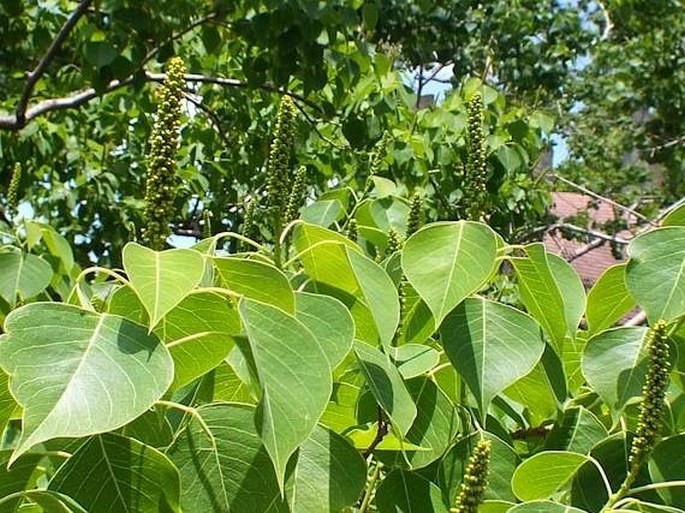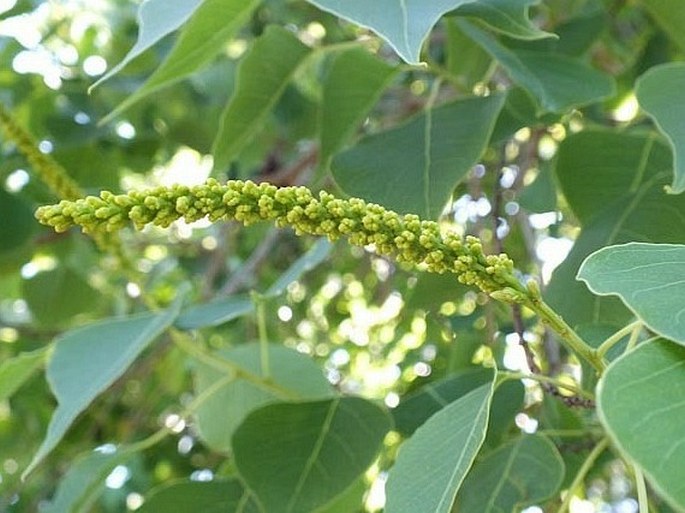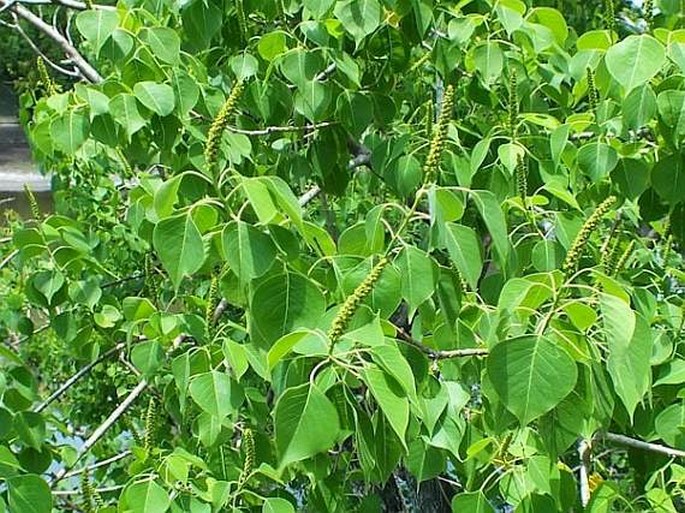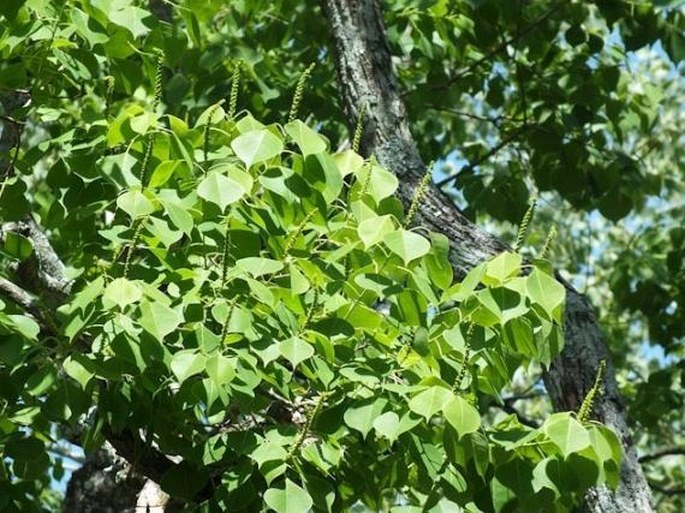Syn.: Carumbium sebiferum (L.) Kurz, Croton sebifer L., Excoecaria sebifera (L.) Müll. Arg., Sapium chihsinianum S. K. Lee, Sapium sebiferum (L.) Roxburgh, Stillingia sebifera (L.) Michx., Triadica sinensis Loureiro
Family: Euphorbiaceae Juss.

Distribution: Native in the Huang He valley, currently widespread in large areas of southern China, Taiwan and Vietnam. Naturalized in India, Pakistan, Japan, Indonesia, Singapore and eastern Australia. Also found in US in states of Georgia, South Carolina, Louisiana and Texas.
Ecology: Lowland species growing in wet areas, swamps, marshes and along streams, up to 100 m of elevation. Blooms from April to August.
Description: Small tree to 15 m tall, monoecious, glabrous. Bark dark green, with longitudinal stripes, pale brownish when older, branchlets spreading. Leaves alternate, petiole 2.5–6 cm, with small stipules, blade rhomboid to broadly ovate, 3–13 × 3–9 cm, papery, base broadly rounded, truncate, margin smooth, midrib slightly elevated. Flowers yellowish green in terminal racemes, 5–35 cm long, female in lower part, male in upper part. Male flowers 10–15 per bract, basal glands kidney-shaped, pedicels 1–4 mm; calyx cup-shaped, shallowly 3-lobed, irregularly serrulate; stamens 2 or 3, filaments free, anthers globose. Female flowers 1 per bract, bracts 3-lobed, pedicel stout, 2–5 mm, calyx 3-lobed, styles 3, stigma revolute. Infructescences up to 28 cm long with roundish capsules, black, 11–13 mm, 3-seeded, seeds oblate, 8 × 6–7 mm, black, covered with white waxy covering.
Note: Pressed seeds of this species produce fat, used for candles and soap. The bark and the seed oil contain a poisonous alkaloid. The leaves are used to make a dark dye. The roots are used in Chinese medicine to detoxify the snake bites.
Presently this species is cultivated widely in Asia for production of biodiesel and it is the third most productive vegetable oil crop in the world. However, In North America it proved to be highly invasive and damaging species with long viable seeds. A mature stand of these trees can produce 4500 kg of seeds per hectare per year.



These images were taken in USA, southern Louisiana (May 2014).


